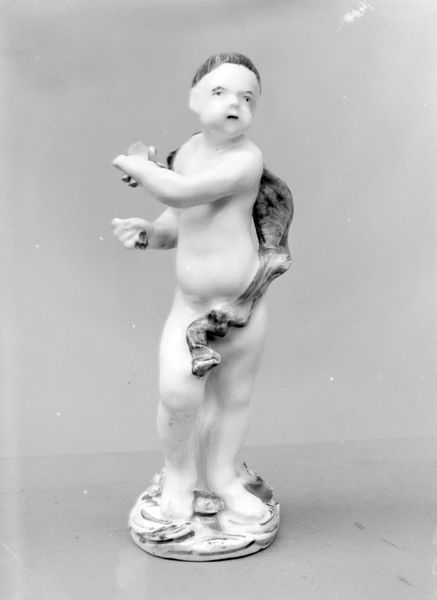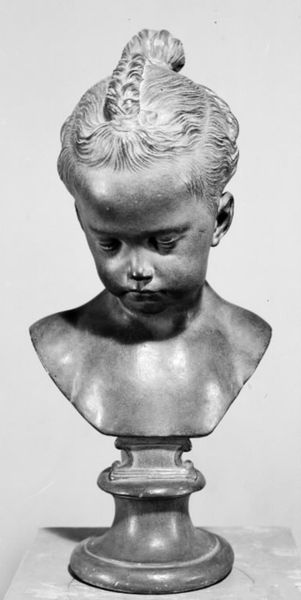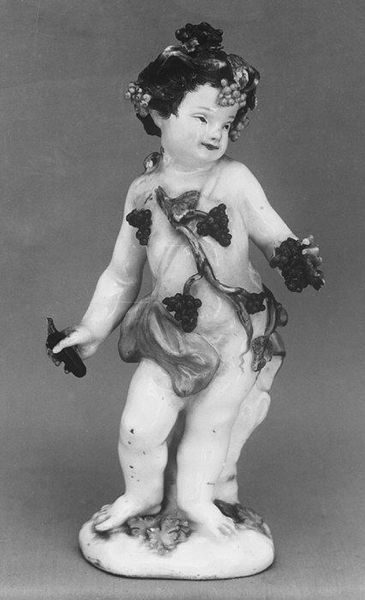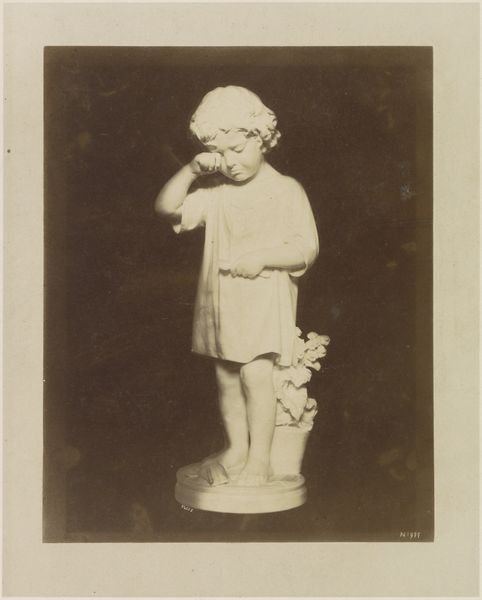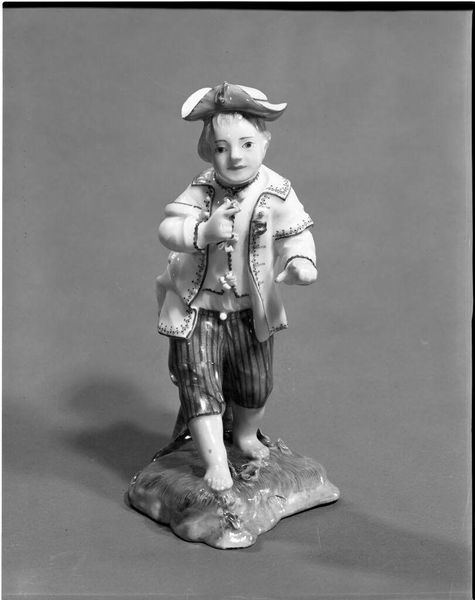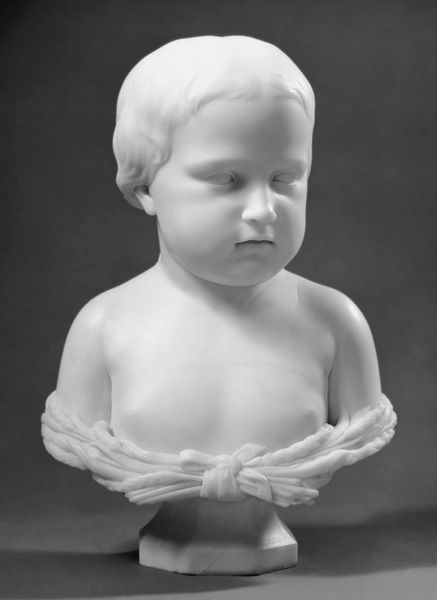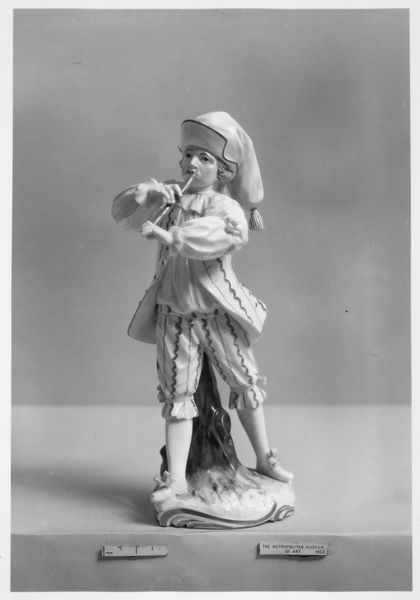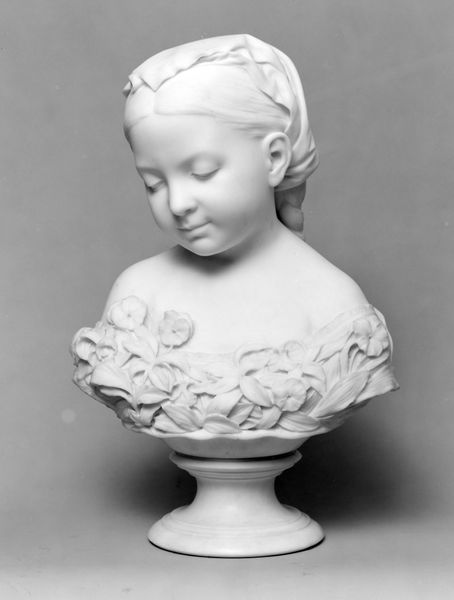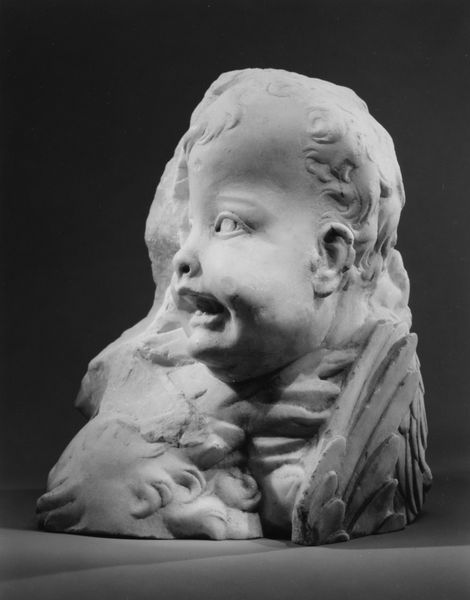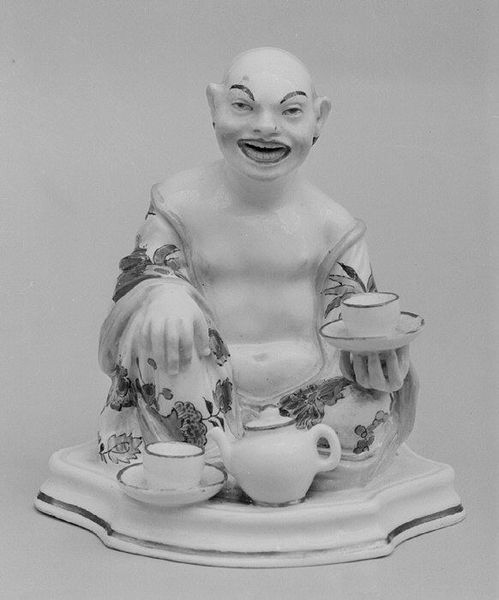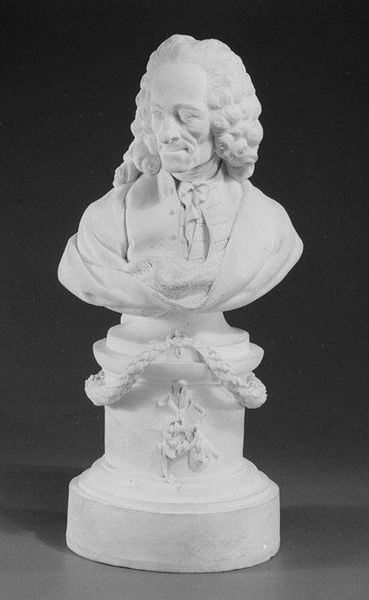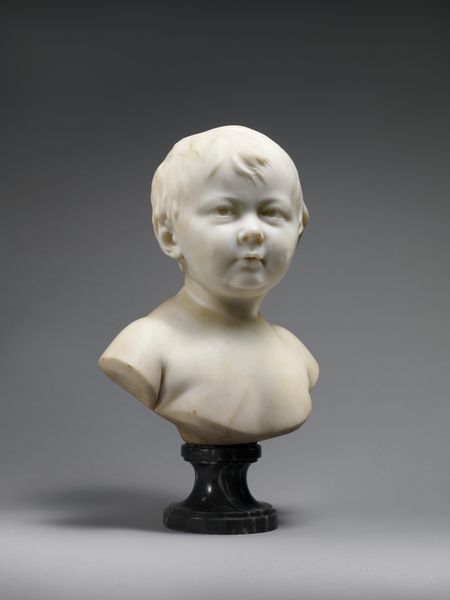
ceramic, porcelain, sculpture
#
portrait
#
sculpture
#
ceramic
#
porcelain
#
figuration
#
sculpture
#
decorative-art
#
miniature
#
rococo
Dimensions: Height: 10 1/2 in. (26.7 cm)
Copyright: Public Domain
Editor: We’re looking at a porcelain sculpture titled "Bust of a Laughing Boy," crafted around 1761 by the Nymphenburg Porcelain Manufactory. It's small and delicate, yet that laugh feels incredibly boisterous! What strikes you most about this piece? Curator: The laughter, though seemingly innocent, invites a critical look. Whose laughter is privileged, and whose is silenced in Rococo art? This era often idealized childhood, but that ideal was limited, largely excluding the experiences of working-class children, or those from colonized nations. The perfection of the porcelain reinforces that separation. Editor: So, it's not just a charming image but speaks to societal structures? Curator: Exactly. The porcelain material itself becomes significant. It signifies wealth, power, and the exoticism associated with its origins. Does this sculpture invite genuine empathy, or does it serve to reinforce a specific social hierarchy, presenting an image of carefree joy unattainable to many? Editor: That reframes how I see it completely. The material becomes as important as the subject matter itself. It makes you consider who this was really made for, and the story it tells about that time. Curator: Precisely. We can even ask, who was the "laughing boy?" Was it commissioned as a depiction of some privileged childhood, and at what cost to those denied such a privilege? By probing deeper into the socio-political implications of an apparently 'simple' artwork, we reveal critical narratives. Editor: I didn't expect a little porcelain bust to bring up so many big questions! It really demonstrates how art acts as a reflection, or maybe even a perpetuation, of broader societal dynamics. Curator: Indeed! Hopefully, this dialogue prompts us to reconsider what constitutes innocence and happiness when contextualized within a history of inequality.
Comments
No comments
Be the first to comment and join the conversation on the ultimate creative platform.
